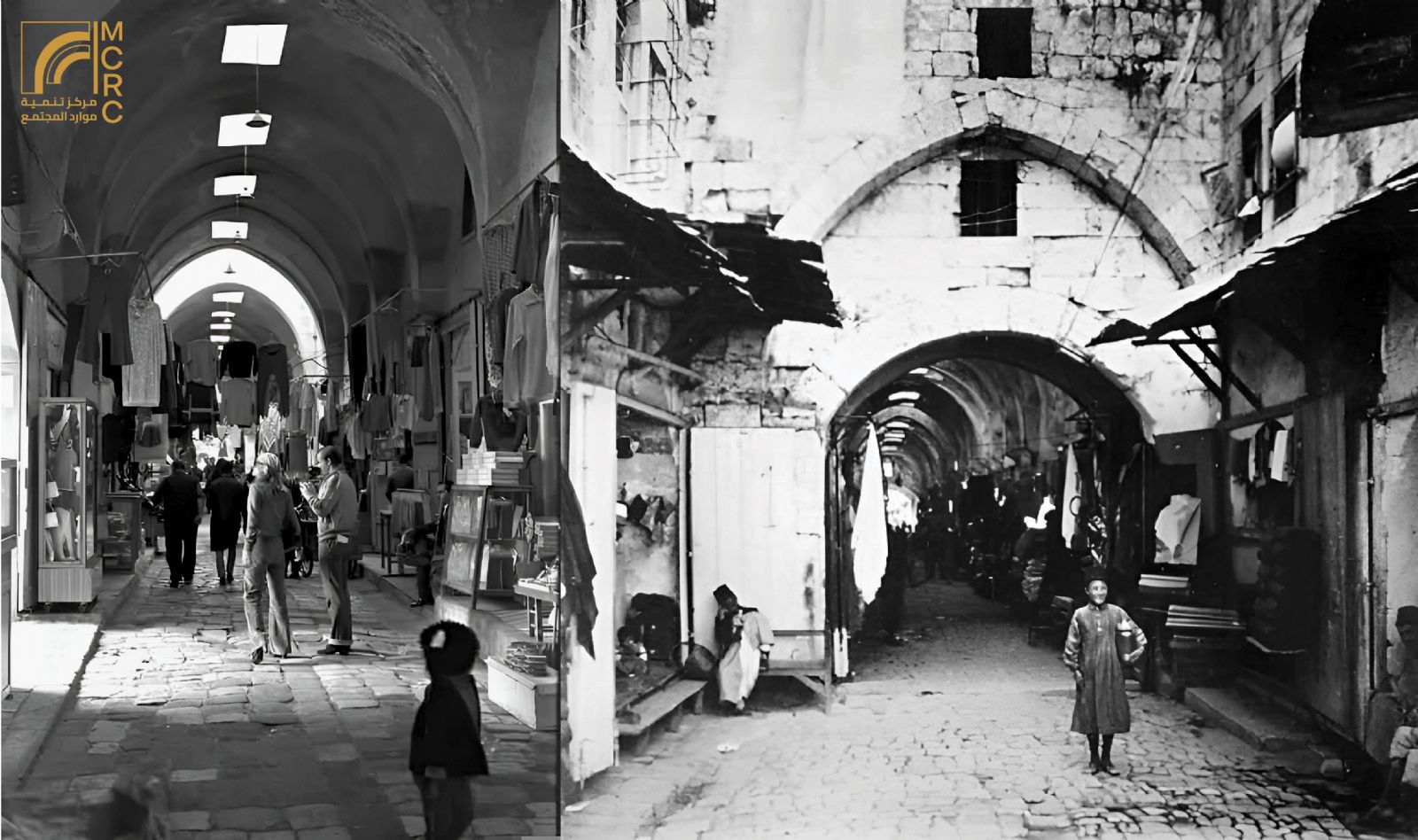
Khan al-Tujjar (The Merchants' Khan) is a historic khan located in the heart of the Old City of Nablus and served as its main commercial center. It was built during the Ottoman period and was originally known as "Souq al-Qimash" (The Fabric Market), where all kinds of fabrics and clothing were sold.
The sign at the entrance to the khan/market shows that it was built in 1569 by the ottoman minister Qara Mustafa Pasha (1500-1580), similar to the Hamidiyeh market in the Syrian capital Damascus.
The walls of the Islamic-style roofed building (in the form of arches raised with stones and mud) still retain Ottoman inscriptions.
The Khan was restored in 1102 AH 1690 AD, and following the earthquake in 1927. During the Israeli invasion in 2002, the eastern entrance to the Khan, consisting of the Qanatra and the residential buildings above it, was destroyed.
خان التجار هو خان يقع وسط المدينة القديمة في نابلس، ويمثل المركز التجاري الرئيس لها، بني في الفترة العثمانية، وكان يعرف باسم "سوق القماش" وكانت تباع فيه كل أنواع الأقمشة والألبسة.
تقول لافتة على مدخل الخان/ السوق أن الوزير العثماني قره مصطفى باشا (1500-1580)، شيّده في العام 1569، على غرار سوق الحميدية في العاصمة السورية دمشق، ولا تزال جدران المبنى المسقوف على الطراز الإسلامي (على شكل أقواس نهضت بالحجارة والطين)، تحتفظ بنقوش عثمانية..
وتم ترميم الخان سنة 1102 هـ 1690 م، وعلى إثر الزلزال سنة 1927م. كما أصاب التدمير أثناء الاجتياح الإسرائيلي عام 2002 المدخل الشرقي للخان والمتمثل بالقنطرة والأبنية السكنية فوقها